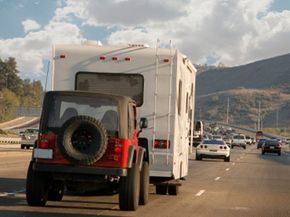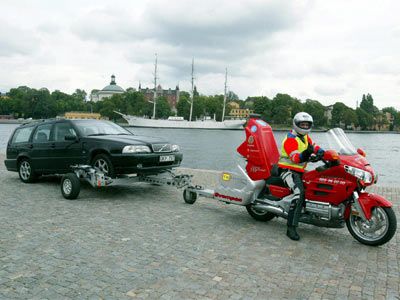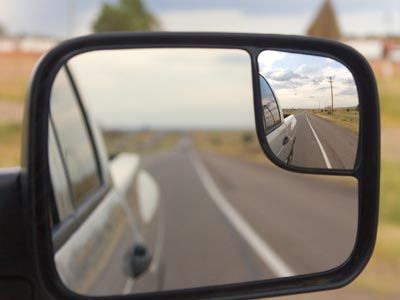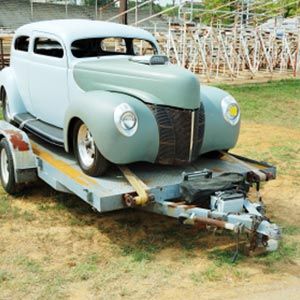Whether you realize it or not, you've probably seen lots of different towing methods on your local streets and highways. There are trailers that keep all four wheels off the ground, tow dollies that lift only two wheels off the ground, and tow bars that leave all four wheels on the ground. If you've never towed another vehicle, you might be thinking, "Why so many options?"
As it turns out, these options make a big difference. If you let the drive wheels of a towed vehicle remain on the ground, you risk severe transmission damage. This is true for all vehicles, but four-wheel drive presents special challenges since all the wheels are drive wheels.
Advertisement
Using a flatbed trailer that keeps all four wheels off the ground is the simplest solution. With this technique, there's no need to worry about transmission damage. You just load up the car or truck and go.
If you can't get a flatbed to do the job, then you'll need to explore other options. Tow dollies, which lift just the two front wheels off the ground, can work, but using one requires special effort. You'll have to disconnect and remove the drive shaft to protect the transmission [source: Penske Truck Rental].
A tow bar is another option. This is a rigid set of bars -- in the shape of a triangle -- that connects the vehicle being towed to the tow vehicle. One point of the triangle has a coupler that attaches to the ball hitch on the tow vehicle, while the wide end of the triangle attaches to the front bumper of the vehicle being pulled. This method of towing allows all four wheels of the towed vehicle to roll on the ground. Of course, since the drive wheels are still on the ground, you'll need to take precautions to protect the driveline.
If you have a manual transmission, a manual transfer case and manual lockout hubs, you can tow your four-wheel-drive vehicle with all four wheels down and sustain no damage. Of course, you'll have to refer to the owner's manual to learn how to properly unlock, or disengage, all of these features to ensure that none of the components will be damaged during the actual towing. If your four-wheel-drive vehicle does not have a manual transfer case and manual lockout hubs, then you'll need to install a drive shaft coupling device on the rear drive shaft [source: Remco Towing].
A drive shaft coupling is useful when you're towing a four-wheel-drive vehicle that does not have a manual transfer case. Instead of manually disconnecting and removing the drive shaft from your car or truck, a drive shaft coupling allows you to quickly switch between driving (drive shaft engaged) and towing (drive shaft disengaged) modes right from the driver's seat [source: Remco Towing].
Probably the best bit of advice that anyone can offer you for towing a four-wheel-drive vehicle is to suggest that you review your owner's manual for towing instructions and precautions. The manufacturer sets guidelines that are specific to the year, make and model of each of its vehicles. Ignoring this information could be an expensive mistake.
Advertisement



